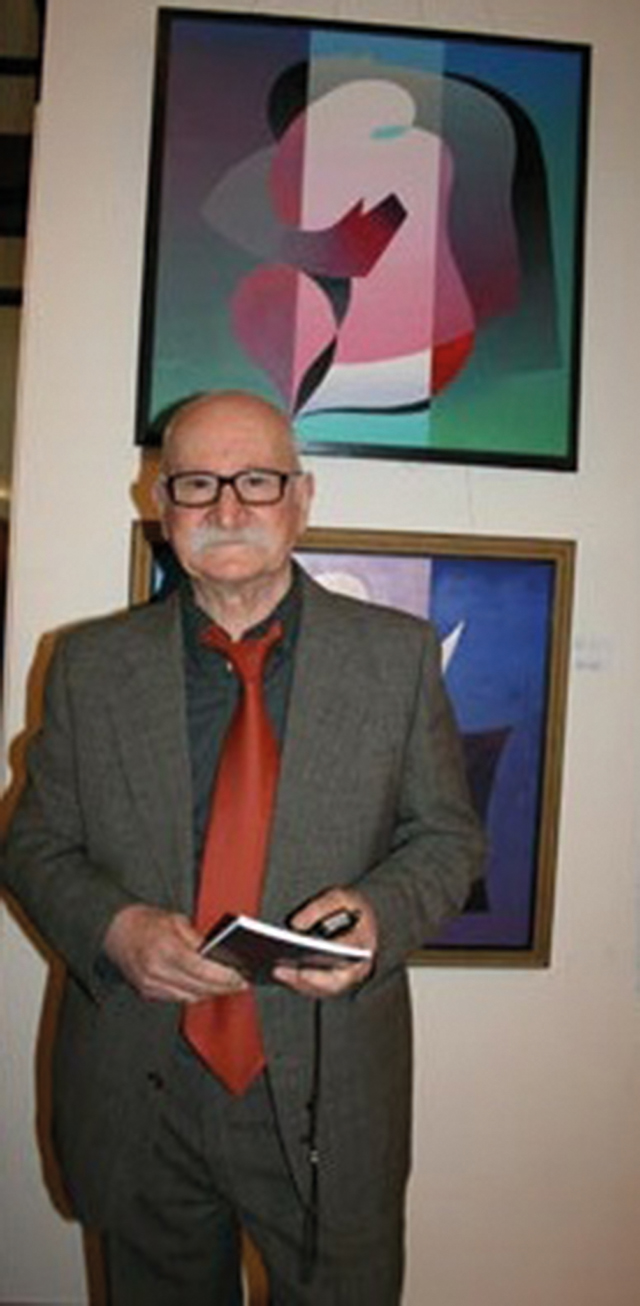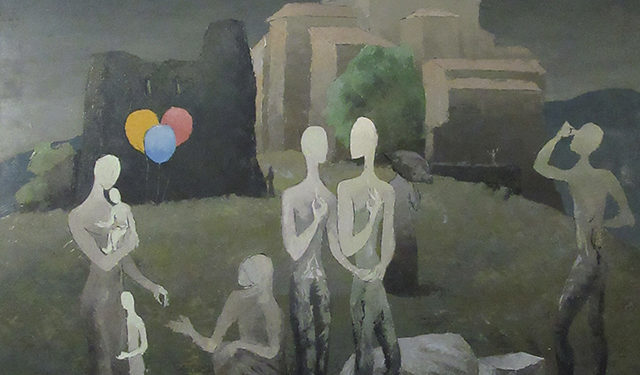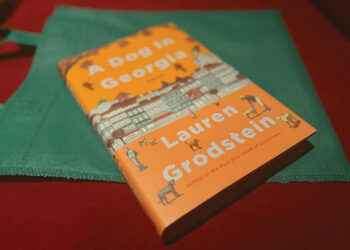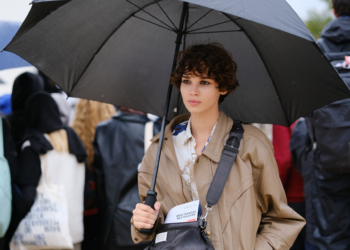Givi Vashakidze was born on August 7, 1937, in Tbilisi. He studied the basics of art at Tbilisi Students’ Palace, where he studied painting from Grigol Meskhi and Shalva Kapanadze from 1951-1954. There, he studied Still Life painting, and later created his first artistic work “Wounded Rider in Svaneti”.
Vashakidze continued his studies at the Tbilisi State Academy of Arts, where he was taught painting by Khita Kutateladze and Robert Sturua (father of a well-known theater producer), and graphics by the famous artist Sergo Qobuladze.
In the late 1950s, certain changes took place in Georgian and, in general, the artistic space of the Soviet Union, seeing young artists standing aside from so-called “socialist realism” and beginning to study Western European art of the late 19th and early 20th centuries on a deeper level. These young Georgian artists had the basis for this through the works of earlier generation artists: Mose Toidze, Valerian Sidamon-Eristavi, Dimitri Shevardnadze, Davit Kakabadze, and Lado Gudiashvili, which, to some extent complemented the discontinuity of creative methods between generations. Many of them later chose the Impressionist and Post-Impressionist painting style. Some, including Givi Vashakidze, became followers of the avant-garde artistic direction of the early 20th century: abstractionism, expressionism, metaphysical painting and surrealism.
Of course, the formal art leaders opposed such painting, at the behest of the elite of Communist Party and the State Security Committee. The young artists were often summoned to and interrogated by party and law enforcement agencies, but the creative youth did not give up and followed the path of artistic innovation of their choice.

Shatili is a famous Georgian village in the high Caucasus Mountains, it is famous for its Towers and is listed in the World Cultural Heritage list of UNESCO. Unfortunately, Georgian people abandoned these towers and the painter Givi Vashakidze expressed his pain at the problem of Georgian Mountainous people, coming down to the big cities and leaving the old traditional villages empty.
Givi Vashakidze was among them, devoting a large part of his work to surrealistic compositions. In addition to such compositions, his work also includes symbolic, metaphorical, imaginative compositions that represent world through philosophical perception. Vashakidze can literary be considered as one of the first followers of surrealist, symbolic imaginative art of late 20th century Georgian painting. Of course, due to this, the Soviet officials did not allow the artist to organize exhibitions, and only in 1977, on the personal decision of the prominent Georgian dissident, director of Rustaveli National Theater of that time, writer Akaki Baqradze, was Vashakidze’s first personal exhibition held in the foyer of the theater. After that, in 1979, the artist had a personal exhibition in Riga, the capital of Latvia.
In the USSR, during the so-called “Perestroika” period, party censorship was reduced to some extent and Vashakidze was able to organize a personal exhibition in his hometown at Tbilisi Artist’s House thanks to the efforts of the artist Temo Gotsadze, director of Tbilisi Artist’s House. Unfortunately, this magnificent House of Artists was burned down and destroyed during the civil war in Tbilisi in December-January 1991-92, and important works of contemporary Georgian art which were kept and exhibited there were destroyed.

In 1989, Givi Vashakidze’ personal exhibition was organized in the Cultural Center of Georgian representation in Moscow “Mziuri,” at the Old Arbat. In 1989 and 1990, he participated in a group exhibition of Georgian artists in the Bavarian city of Munich, Germany. A similar group exhibition was organized in 1991 in Tyrol. In 1996, Vashakidze’s works were exhibited in Munich again, and in the 2003, he had a personal exhibition in the city of Baku.
After the personal exhibition organized at the Artist’s House in 1987, Vashakidze’s personal exhibition was organized for the second time in Tbilisi only in 2010.
Givi Vashakidze passed away in 2017.
In 2019, a personal exhibition of the artist was organized in the exhibition hall of the Acad. G. Chubinashvili State Center of Study of Georgian Art, under the leadership of Mariam Gachechiladze, Doctor of Art, Head of the Department of Contemporary Georgian Art.
Givi Vashakidze worked on illustrations of ‘’The Knight in the Panther’s Skin” and created nearly 50 illustrations.

As mentioned above, surrealist compositions held a certain place in Vashakidze’s work from the 1960s. Such is the artist’s painting -“Wind has been blowing since morning”(1967), a gouache painting depicting abstract shapes and figures presented in dynamics and deformed by the wind on a background of greenish-blue tones. The artist’s “Self-Portrait” (1964) belongs to the same period, painted in green and yellow tones in the manner of neoclassical realism of the 1920s and 1930s.
In the 1970s and 1980s, the artist created compositions with minimalist-abstract, grotesque figures of a more metaphorical nature, against the backdrop of sharp, vivid tones that echo somewhat David Kakabadze’s abstract figurative compositions and collages. However, Givi Vashakidze gives a symbolic-allegorical backdrop to his compositions and creates large paintings.

The artist’s works of 2010 appear as a background for symbolic-metaphorical compositions of medieval Georgian architecture, and thus Vashakidze achieves a synthesis of conveying the problems of cultural heritage and modernity in metaphorical forms, such are the big panels: “Shatili-Fire Alarm”(2014) and “Love and the Church”(2014).
Givi Vashakidze’s art convincingly stands out by its distinctive style in late 20th century Georgian painting.
He and other prominent non-conformist artists of his generation, Avto Varazi, Otar Chkhartishvili, Temo Japaridze, Albert Dilbariani, and Simon Girkelidze, undoubtedly advanced Georgian contemporary painting, enriching it with new metaphorical faces and artistic expressions.

True artists are always given their credit in due time. Givi Vashakidze’s art has also been appreciated in the 21st century and established in modern Georgian painting.
Givi Vashakidze’s art exhibition is currently running at “Solomon Arts Gallery” in Tbilisi.














